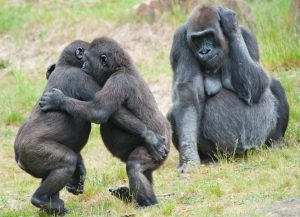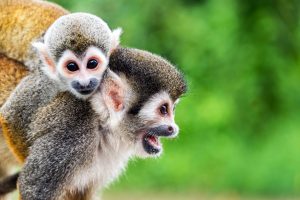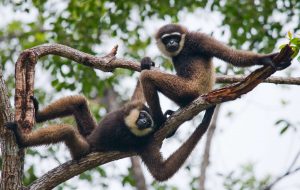African Primate Certificate Level 3
- This two module African Primate course has been created for anyone interested in working or volunteering with African Primates.
- Learn about ecology, conservation, habitats and biology relevant to African Primates.
- This 2 module course also investigates the conservation threats faced by African Primates.
*You will have access to the course for 6 months only, after which, you can purchase extensions.
Working with Born Free
The Born Free Foundation is a dynamic international wildlife charity, devoted to compassionate conservation and animal welfare.
We support the work of Born Free and donate 15% of each enrolment on this course to the charity.
Module 1
Biology and Ecology
Learn about African Primate biology and ecology and of a number of case study species. Learn about the difference between “monkey” and “ape”.
Module 2
Conservation & Management
In this African Primate Course, you will learn about the conservation threats and strategies concerning the conservation of African Primates. Learn about the successes and failures of conservation case studies of African apes and monkey species.
The biggest distinction to be made within the primates is the difference between “monkeys” and “apes”. However, there are actually three types of primate, the prosimians, the monkeys and the apes. Prosimians are considered the most primitive of the primates, and comprise the Strepsirrhini including the lemurs, galagos and lorises.
Prosimians are thought to have evolved around the time of the dinosaurs (approx. 65 million years ago) and are therefore the most ancient living primates. This explains the meaning of their group’s name which is “before the monkeys”.However, although they are an ancient group they are not primitive as such but do retain many features of the earliest true primates.
For example, they have large eye sockets, a small braincase and elongated snout, which are adaptations for acute hearing and smell. Grooming appears to be an important part of prosimian life as they have two adaptations especially for this activity.Prosimians have curious looking structures on their lower front teeth, which appear comb-like and are used for grooming. Additionally, they have a specialised claw on one toe of their hind feet that is also used for grooming.
Monkeys can be divided into the Old World Monkeys and New World Monkeys, which is primarily a geographic distinction, whereby the Old World Monkeys are found in Africa, Asia and the Middle East. There are several categorical threats to primates throughout Africa. Amongst the Great Apes, every species and subspecies is endangered and some are on the brink of extinction. Other primates face similar threats to their survival in the wild.
All of these threats result from contact and conflict with human populations. While each one is a distinct threat to the survival of particular species these threats are usually found in combination. For example, logging of the forests leads to human encroachment into gorilla habitats. This results in hunting (for bushmeat, the pet trade or illegal capture and trade). Encroachment of human settlements into gorilla habitat also increases the danger of diseases
spreading amongst the resident gorilla populations, since gorillas are affected by human diseases. This course explores the subjects of biology, ecology and conservation of african primates.
5 Star Reviews of African Primate Studies Certificate Level 3
We offer a selection of accredited and employer recognised courses specifically designed for careers working with animals.
If you have any questions about our courses, please contact us.
We’ve assisted many people to achieve their goal to work with animals. Read more about our 5-star reviews and student success stories.
Gain relevant training to achieve your goal to work with animals.






